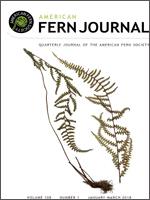The most abundant fern species in northeast United States forests are wintergreen. These ferns keep their fronds for one year before replacing them in the spring. The wintergreen fronds soften at their base in fall and survive the winter under snow, allowing vernal photosynthesis and providing an energetic benefit to the plant. This study addressed whether or not the softening of the stipe is critical to the evolutionary adaptiveness of the wintergreen leaf habit. I kept the fronds of 12 Dryopteris intermedia plants upright through the winter of 2015–2016 and left those of 12 other plants prostrate as controls. In the spring of 2016, a greater proportion of the frond surface area had frost damage on the upright fronds than on the control plants, and a greater proportion of the fronds were broken in the upright plants than in the control plants. The softening of the stipe was probably a critical step in the evolution of the wintergreen habit in D. intermedia.
How to translate text using browser tools
27 March 2018
Upright Fronds of Dryopteris intermedia Suffer Frost Damage and Breakage during Winter
Jack T. Tessier
ACCESS THE FULL ARTICLE

American Fern Journal
Vol. 108 • No. 1
March 2018
Vol. 108 • No. 1
March 2018
deciduous forest
Dryopteridaceae
fern
herbaceous layer
understory




